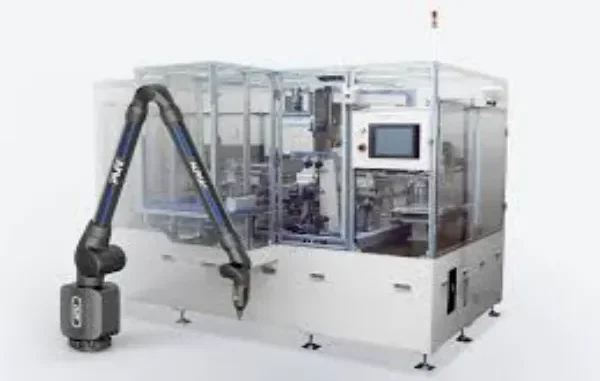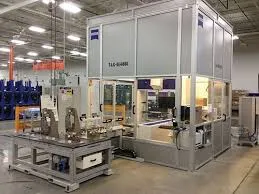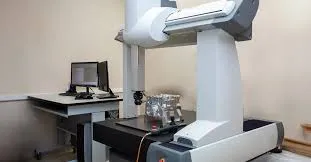
In modern manufacturing, precision is everything. From aerospace components to automotive parts, even the smallest deviation in measurement can lead to costly rework, wasted materials, or product failures. That’s why more production lines are turning to Coordinate Measuring Machines (CMMs) as a cornerstone of quality control.
CMM inspection doesn’t just improve accuracy—it also streamlines processes, reduces downtime, and boosts overall efficiency. If you’re in the manufacturing space and considering ways to enhance your operations, here’s how CMM inspection can make a measurable difference.
What Is CMM Inspection?
A Coordinate Measuring Machine (CMM) is a device that measures the geometry of physical objects by sensing points on the surface with a probe. The machine translates these measurements into highly accurate data that can be compared directly against design specifications or CAD models.
CMMs come in different forms—bridge, gantry, and portable arms—but all serve the same purpose: to verify that manufactured components meet exact dimensional standards.
Reducing Human Error

Traditional inspection methods rely heavily on manual measuring tools such as calipers, micrometers, or gauges. While these tools have their place, they leave room for variability due to human error.
CMM inspection, on the other hand, automates the process. The probe captures data points consistently and with extreme precision, often within microns. By eliminating human variability, manufacturers ensure consistent quality and reduce the risk of defects slipping through.
Faster Quality Control
In production lines, time is money. Manual inspections can take hours, especially for complex parts with intricate features. CMMs dramatically speed up this process by automatically scanning and measuring multiple dimensions in minutes.
This efficiency means:
- Faster approval of parts.
- Quicker feedback loops when problems arise.
- Reduced downtime caused by lengthy quality checks.
The result is a smoother production flow with fewer delays.
Supporting High-Volume Production
For manufacturers running high-volume operations, scalability is critical. CMM inspection integrates easily into production environments, offering repeatable results no matter how many parts are produced.
Automated CMM systems can even be programmed to inspect batches continuously, ensuring every part meets specifications without slowing down the line. This level of consistency is nearly impossible to achieve with manual inspection methods.
Improving Accuracy and Compliance
Industries like aerospace, medical devices, and automotive often face strict regulatory requirements. CMMs provide a level of precision that not only meets but exceeds industry standards.
Accurate data ensures compliance with ISO and other quality certifications. It also reduces the risk of recalls, warranty claims, or reputational damage due to defective products reaching the market.
Reducing Waste and Costs
Defective parts don’t just waste materials—they also waste labor, energy, and machine time. By catching deviations early in the production process, CMM inspection minimizes scrap and rework.
Over time, the savings add up significantly:
- Less wasted raw material.
- Lower labor costs spent on fixing mistakes.
- More efficient use of equipment and resources.
For companies seeking leaner operations, investing in CMM inspection is often a cost-effective choice.
Enabling Data-Driven Decisions

CMMs don’t just deliver “pass” or “fail” results—they provide comprehensive measurement data. This information helps manufacturers spot trends, identify recurring issues, and optimize processes.
For example, if multiple parts show the same dimensional drift, it may indicate a tool wear problem or machine calibration issue. Addressing these root causes early prevents larger production setbacks.
Integration with Digital Manufacturing
As industries move toward Industry 4.0, CMM inspection fits seamlessly into digital workflows. The data collected can be integrated directly with CAD/CAM systems, allowing for real-time comparisons and quicker design adjustments.
Manufacturers that leverage this digital integration benefit from:
- Shorter product development cycles.
- Faster prototyping and iteration.
- Improved collaboration between design and production teams.
This level of integration helps bridge the gap between engineering and manufacturing, further boosting efficiency.
Partnering with Professionals
While some companies invest in their own machines, others turn to external providers for support. Working with specialists in CMM Inspection Services ensures access to advanced equipment and skilled technicians without the heavy upfront costs of purchasing a machine.
This approach is particularly beneficial for small to mid-sized manufacturers who need high-quality inspection but can’t justify the investment in permanent in-house systems.
Final Thoughts
CMM inspection has become an essential tool for modern production lines, offering unmatched precision, speed, and reliability. By reducing errors, streamlining quality control, and providing actionable data, CMMs help manufacturers save time, cut costs, and stay competitive in demanding markets.
Whether integrated directly into your workflow or outsourced to professional providers, CMM inspection is more than just a quality check—it’s a strategic investment in efficiency and long-term success.






Leave a Reply